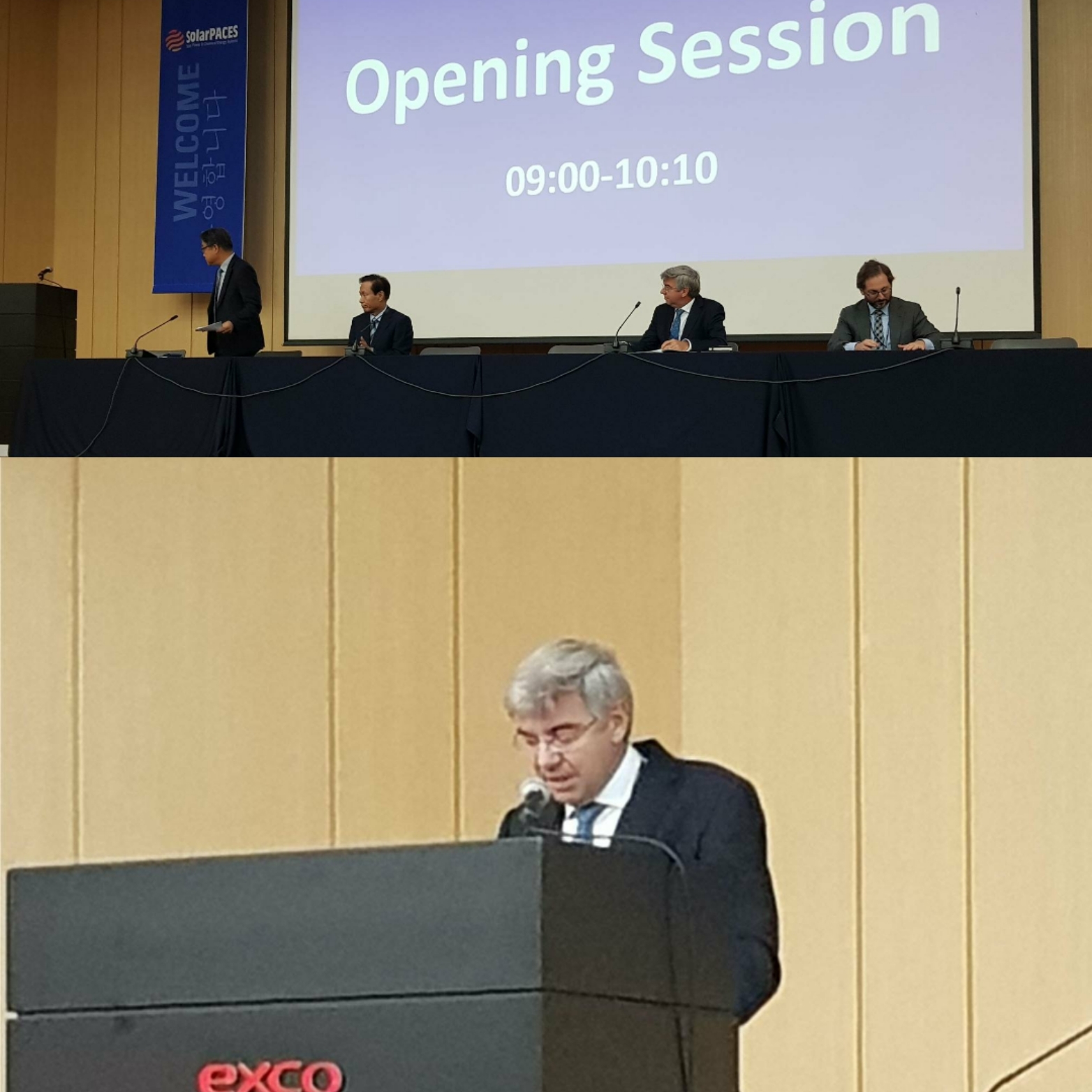
01 Oct President of ESTELA gave opening speech at SolarPACES event in Daegu, South Korea
SOLARPACES 2019
Welcome text by José Luis Martínez Dalmau – President of ESTELA
Dear SolarPACES participants,
Looking at the global situation of our CSP sector in 2019, we face a massive shift in causes and effects that bears in itself a new chance for our sector to deploy quicker, building on its main assets.
Causes. The strong decline of RES prices made the policy makers see the costs of the electrical system as the main driver for decarbonization, leaving a bit aside the political commitment to it. In terms of LCOE, RES including CSP, are already competitive against fossil power generation.
Effects. Since variable RES gained weight in the energy mix, the lowest LCOE (as sole decisive criterion for technology choices) lost momentum, as it excludes externalities whose costs can be higher than the LCOE itself! Moreover, the need for storage, for network reinforcements, increased curtailments result today in having no longer LCOE, but flexibility in the focus. This also triggered a multi-sector ‘race for solutions’ across electricity and gas utilities (P2G, P2X) as well as the automotive sector (batteries) leaving aside much of the decarbonization objective.
Opportunity. This is a true opportunity for solar thermal technology with storage. In countries with good DNI, CSP plants with storage will provide the best complement to PV for meeting the demand after sunset and contribute to increasing firmness of the back-up capacity thanks to its manageability.
Apart from thermal storage, our sector may take advantage of the new situation with flexibility as essential piece to guarantee the stability and reasonable costs of the power system.
Strong CSP assets. I would like to highlight thermal storage. By the end of 2018, the current storage capacity of CSP plants exceeded more than 10 times the capacity of all batteries connected to the network – worldwide. This mature technology, of great capacity in terms of volume of energy and power of delivery, has demonstrated a its reliability – without major degradations. It offers flexibility services for the electrical systems and can be combined with the steam cycles of both coal and combined cycles that will have to be dismantled, especially in Europe. This will reduce the economic and social impact of the dismantling.
The development of specific applications for each market and its own natural resources could precisely integrate technologies linked to the CSP industry and provide value for the decarbonization process. The SolarPACES conference is a privileged place to share the progress made as well as our future action lines.
I wish you a very fruitful conference and a pleasant stay in Daegu.
José Luis Martínez Dalmau
President of ESTELA



